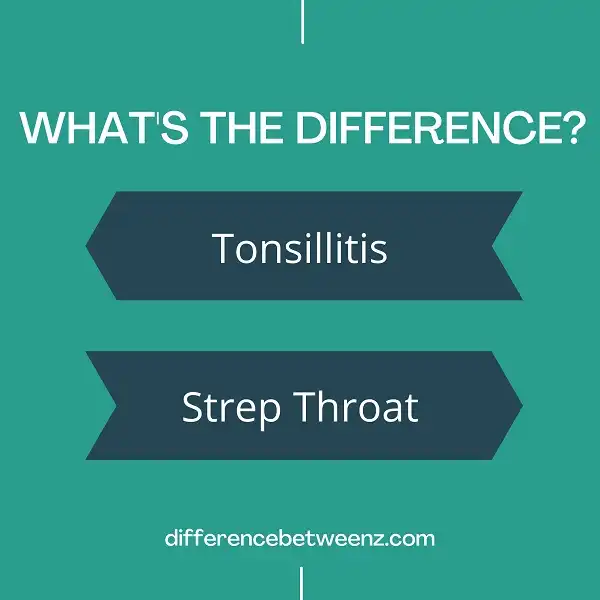If you are experiencing sore throat, difficulty swallowing, swollen tonsils, and a bad headache, you may be wondering if you have strep throat or tonsillitis. While both conditions are caused by bacteria, there are some key differences between them. In this blog post, we will outline the key symptoms of each condition, as well as how they are treated. We hope that this information will help you determine which condition you may have and seek appropriate treatment.
What is Tonsillitis?
Tonsillitis is an inflammation of the tonsils, which are two lymph nodes located in the back of the throat. Tonsillitis is usually caused by a viral infection, such as the common cold or flu. However, it can also be caused by a bacterial infection, such as strep throat. Tonsillitis can occur at any age, but it is most common in children between the ages of 5 and 15. Symptoms of tonsillitis include sore throat, fever, headache, and fatigue. Tonsillitis is usually diagnosed based on these symptoms. However, a doctor may also order a rapid strep test or a throat culture to confirm the diagnosis. Tonsillitis is usually treated with rest, hydration, and over-the-counter pain relievers. However, if the tonsillitis is caused by a bacterial infection, antibiotics may be necessary. Tonsillitis typically goes away on its own within 7 to 10 days. However, if tonsillitis is severe or recurrent, surgery to remove the tonsils (tonsillectomy) may be recommended. Tonsillectomy is a minor surgical procedure that is typically performed as outpatient surgery.
What is Strep Throat?
Strep throat is a bacterial infection of the throat and tonsils. It’s a common illness in children but can also occur in adults. Strep throat is usually caused by Streptococcus pyogenes, also known as Group A streptococcus. This bacteria is spread through contact with respiratory secretions, such as saliva or mucus, from an infected person. Strep throat can also be spread through contact with contaminated surfaces, such as doorknobs or countertops. Symptoms of strep throat can include sore throat, fever, headache, abdominal pain, and vomiting. If left untreated, strep throat can lead to serious complications, such as rheumatic fever or kidney inflammation. Strep throat is diagnosed with a rapid strep test or a throat culture. Treatment involves antibiotics to kill the bacteria causing the infection.
Difference between Tonsillitis and Strep Throat
- Tonsillitis is an infection of the tonsils, which are two small lymph nodes located at the back of the throat. Tonsillitis is usually caused by a virus, but it can also be caused by bacteria. Symptoms of tonsillitis include sore throat, fever, and swollen tonsils. Tonsillitis is usually treated with antibiotics.
- Strep throat is a bacterial infection that causes symptoms similar to those of tonsillitis, including sore throat, fever, and swollen tonsils. However, strep throat is more serious than tonsillitis and can lead to complications if left untreated. Strep throat is typically treated with antibiotics.
Conclusion
Although both conditions are caused by bacteria, tonsillitis is an infection of the tonsils, while strep throat is an infection of the throat. Tonsillitis can be treated with antibiotics, while strep throat requires antibiotics to clear up the infection. If you’re not sure whether or not you have a bacterial infection, it’s best to see your doctor for a diagnosis and treatment plan.


